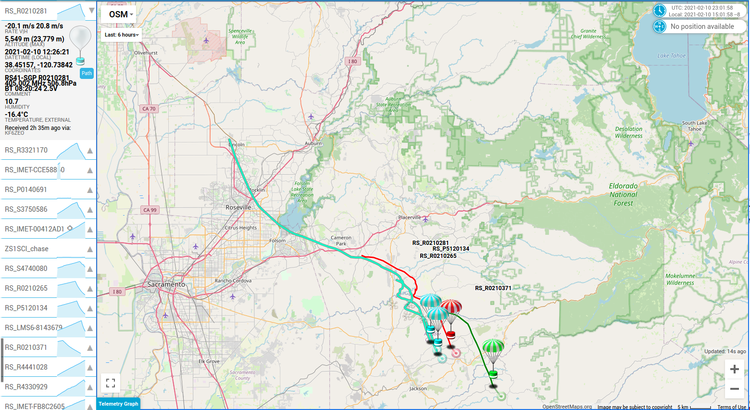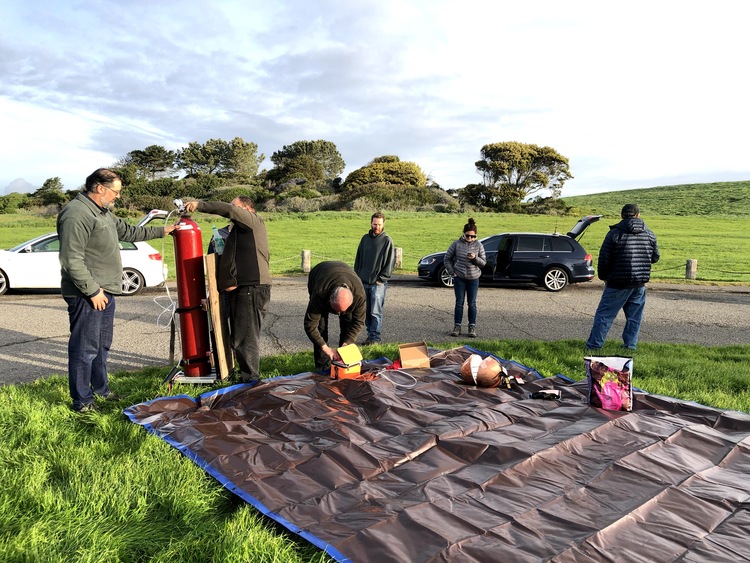The prevailing winds here in California blow from west to east, from the Pacific Ocean towards the Sierra Nevada mountains. Radiosondes launched from Oakland International Airport float in these winds, landing east of Oakland in the Central Valley, or south in the hills east of San Jose. I never recover the ones that land in the Central Valley, as driving 2 hours each direction during rush hour to recover a balloon is a bit too far for me. Only rarely do they land in populated areas in the Bay Area, and almost never on the Peninsula or in the city of San Francisco.
This map (code below) shows the landing locations of all the radiosondes launched from Oakland since November 2020, when I started receiving them. Each red dot is the last position received by my two receiving stations, and is typically less than 1,000 meters altitude. This map shows 337 radiosondes, and I have removed the radiosondes launched up north by UCSD during atmospheric river events. As you can see, they are mostly south and east of the ...
Read More →






